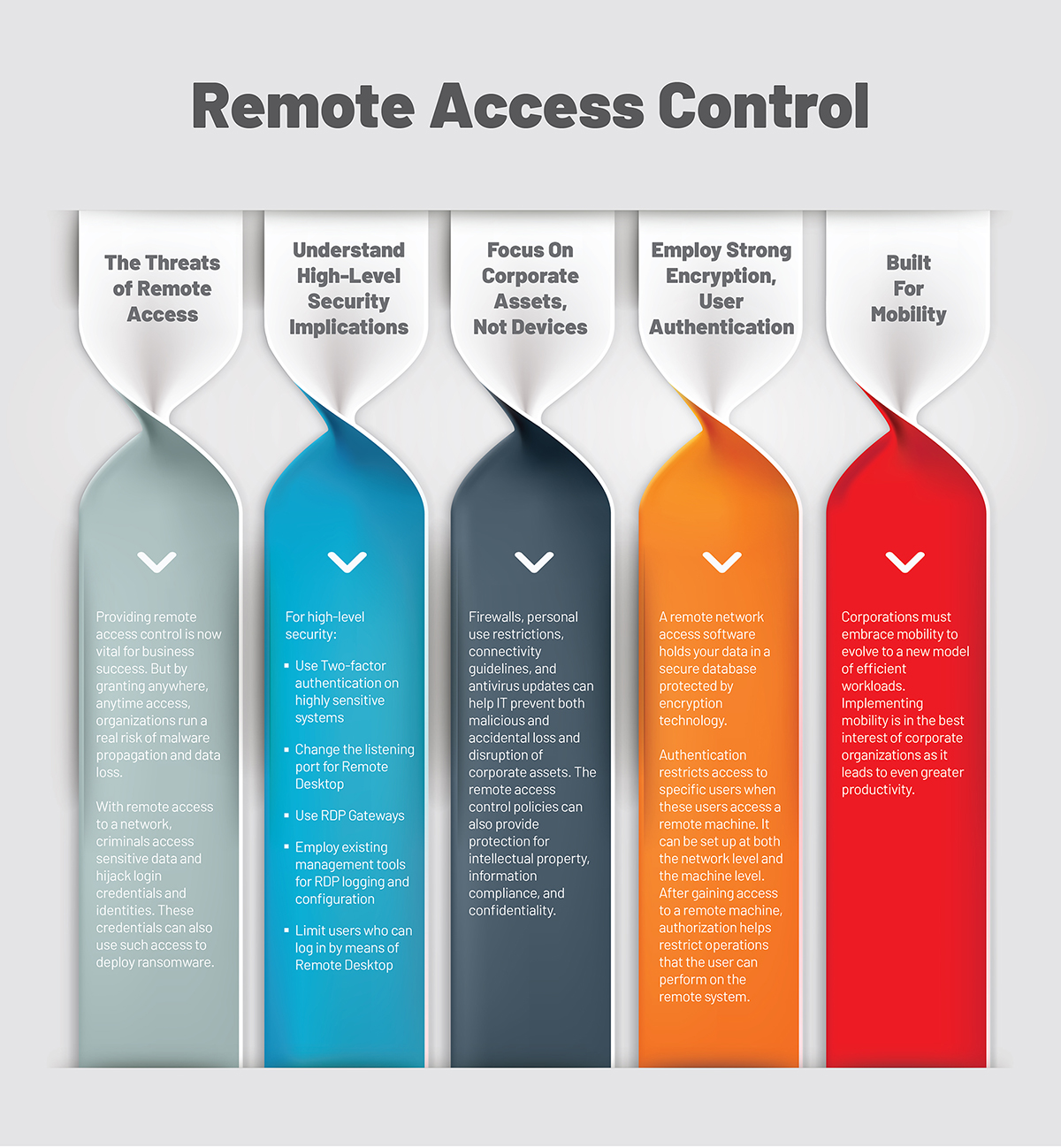How to secure remote desktop from Malware?
- The Threats of Remote Access
- Understand High-Level Security Implications
- Focus On Corporate Assets, Not Devices
- Employ Strong Encryption, User Authentication
- Built For Mobility
Threats of Secure Remote Access
Providing remote access control is now vital for business success. But by granting anywhere, anytime access, organizations run a real risk of malware propagation and data loss. With remote access to a network, criminals access sensitive data and hijack login credentials and identities. These credentials can also use such access to deploy ransomware.
Understand High-Level Security Implications
For high-level security:
- Use Two-factor authentication on highly sensitive systems
- Change the listening port for Remote Desktop
- Use Secure Remote Desktop Protocol (RDP) Gateways
- Employ existing management tools for Secure RDP logging and configuration
- Limit users who can log in through Remote Desktop
Focus On Corporate Assets, Not Devices
Firewalls, personal use restrictions, connectivity guidelines, and antivirus updates can help IT prevent both malicious and accidental loss and disruption of corporate assets. The remote access control policies can also protect intellectual property, information compliance, and confidentiality.
Employ Strong Encryption, User Authentication
A remote network access software holds your data in a secure database protected by encryption technology.
Authentication restricts access to specific users when these users access a remote machine. It can be set up at both the network level and the machine level. After gaining access to a remote machine, authorization helps restrict operations that the user can perform on the remote system.
Built For Mobility
Corporations must embrace mobility to evolve to a new model of efficient workloads. Implementing mobility is in the best interest of corporate organizations as it leads to even greater productivity.

